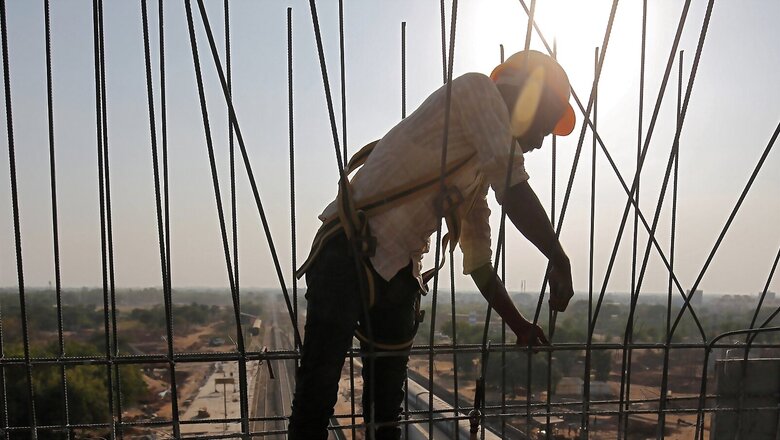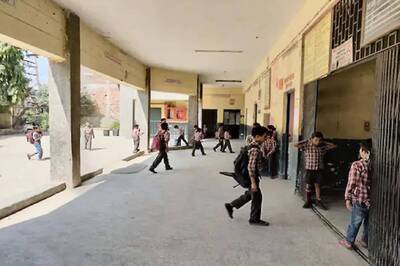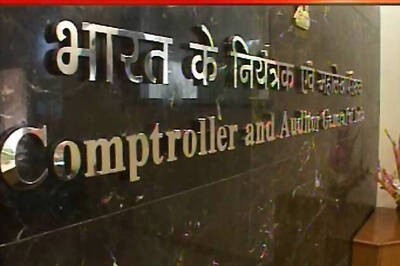
views
How does an economy comprising 891 million people take a U-turn? For every change that Prime Minister P.V. Narasimha Rao introduced in 1991, there was a putrefying ecosystem of decaying politics, rent-seeking inspectors, entrenched businesses, all bound together by a ‘system’ of vested interests and articulated by the Bombay Club that had to be dismantled. On the one side was the rise of a new politics of growth, driven by new entrepreneurs.
In the middle lay an ocean of opportunities. Every clause in the Statement on Industrial Policy 1991 had thousands, if not hundreds of thousands, of people benefiting from and immersed in the inertia of the past business as usual. Several of these had money power—not just a handful of industrialists but the bureaucracy, the politicians, the ‘system.’ How did India negotiate this change? This essay views the event through eight windows, and captures the several moving parts of the economy and their interrelationships to study the past thirty years, and forecasts what lies ahead.
1. History as Future
Protests have been the unchanged currency accompanying every important reform. Three decades ago, protests were financial in the form of the Bombay Club in 1993, when a group of entrenched business interest, led by Bajaj Auto chief Rahul Bajaj, opposed the industrial policy. They had no political support and fizzled out. In the frenzy of Prime Minister P.V. Narasimha Rao’s economic reforms that followed, Rahul Bajaj lost but Bajaj Auto won. In 2020, Prime Minister Narendra Modi is doing to agriculture—a sector that got left behind in 1991—what Rao did to industry. The three farm laws have been enacted. But this time, the rich farmers and middlemen opposing farm reforms not only have the money but also politics behind them. Overnight, farm leader Rakesh Tikait will lose the politics, but millions of farmers, including Tikait, will win.
2. Politics as Weight
From P.V. Narasimha Rao to Narendra Modi, six successive governments under five Prime Ministers across nine terms have transformed their political articulations, from control to freedom. The variety of signatures on economic reforms provide insights into the economic demands of the nation, expressed politically. Arguably, the most adaptive species on this planet, politicians are quick to learn where the interests of their voter-constituents lie and morph with the changing tide. Rajiv Gandhi introduced the National Highways Authority of India, Atal Bihari Vajpayee powered them, Manmohan Singh added his weight and Narendra Modi is delivering huge numbers. All through, all leaders delivered what the people wanted—national and state highways, roads connecting towns and villages. This trend, across sectors, industries and geographies, will continue.
3. Philosophy as Moral Force
The insertion of the world “Socialist” into the Preamble of the Constitution in 1976 during the Emergency—ironically an amendment that the Judiciary has not found in breach of the self-designed, self-labelled, and often self-serving “basic structure”—has locked India into what began as a “socialist pattern of society,” but has turned into a Constitutional bondage. The insertion is a circular motion, from the Executive-controlled Planning Commission to the Executive-controlled Industrial Policy Resolution 1956 to the Executive-controlled Union Budgets to Executive-driven but Legislature-controlled Parliament, duly blessed by the Judiciary of the time. P.V. Narasimha Rao attempted to break the back of this now-decayed philosophy. But even today, its octopus-like tendrils reach out and dominate policy minds. Even though Capitalism remains in the wastelands of India’s policy fraternity, in essence, India has become an experiment where the two philosophies, Socialism and Capitalism, dance the tango in concentric circles, while the people wait for the Bharatanatyam of prosperity. Markets have delivered huge value to citizens, from investments to communications to travel to opportunities. And yet, every time we pick up the Constitution, this outdated school of thought and the word “Socialist” stares us in the face, challenges our Indianness, limits our potential prosperity. This needs to be changed and brought in tune with economic aspirations of Bharat.
4. Velocity as a Strategic Actor
The debate between big bang reforms of enabling the mechanism of 1991 and the gradualism that followed over the next thirty years continues in 2021. Both have worked. While the Statement on Industrial Policy 1991 reframed the foundations of economic policy; ended the dominance of the State in allowing businesses to be set up, grow or diversify; the reforms that have followed since then have been a mix of both. The gradual cut in direct income tax rates across governments or the sequential setting up of regulators (capital markets under P.V. Narasimha Rao, insurance and pensions under Atal Bihari Vajpayee, real estate under Narendra Modi) has been gradualist in approach, mixed in outcomes. That of the goods and services tax or the farm laws is a mix of both gradualist arguments over decades and its executive conclusion by law. On the other side of the velocity spectrum lies Manmohan Singh’s Mahatma Gandhi National Rural Employment Guarantee Scheme that offered social security to millions by its enactment and Narendra Modi’s Jan Dhan Yojana that overnight gave 300 million unbanked citizens bank accounts. It is difficult to decide which is the more efficient route. Economists may seek a ‘big bang’ but politics needs the balm of democratic conversations through gradualism. On the other hand, gradualist policies can be discussed until death, while the 21st-century India needs agile policy decisions. At this moment, agility seems like a distant dream, but given the ongoing pandemic and the economic crisis emanating from it, India’s politics may well deliver a new growth orbit.
5. Geography as Playground
From 1991 through 2021, the economic reforms story has been dominated by the Union government. From initiating disinvestment in 1991 (under P.V. Narasimha Rao) and the Fiscal Responsibility and Budget Management Act in 2003 (under Atal Bihari Vajpayee) to the three-tier income tax rates to 10-20-30 percent in 1997, a new normal until recently (under Deve Gowda) and the Insolvency and Bankruptcy Code in 2016 (under Narendra Modi), the geography of economic reforms has been dominated by the Centre. But now, the reforms action will move to state governments or be a joint action of the Union and the states. The Goods and Services Tax ushered in by Narendra Modi, for instance, is a reform that took almost four decades to come and is now, despite or because of the Union-states tugs-of-rate-war, a model for unified governance equilibrium through the GST Council. Likewise, the farm laws, currently held in abeyance, have been enacted by the Union but it is left to state governments to implement them at the mandi level. Going forward, and increasingly so, the theatre of reforms will now shift to state governments, as it has during the ongoing pandemic, where Madhya Pradesh, for instance, has made doing business far easier, while Telangana is going out of its way to attract entrepreneurs. To grow into a US $10 trillion economic powerhouse, four of India’s states have to become Indonesias, or about trillion-dollar strong—Maharashtra, Tamil Nadu, Uttar Pradesh, and Karnataka, with Gujarat and West Bengal close behind. Reforms here will add economic heft to the Indian economy.
6. Institutions as Enablers
India could not have reached where it has without changing its institutions. One major institutional change that happened was the shift from government control to independent regulators appointed by the government. Between 1991 and 2021, India has seen the creation of several new regulators—Securities and Exchange Board of India in 1992; Telecom Regulatory Authority of India in 1997; Insurance Regulatory Development Authority of India in 1999; Competition Commission of India in 2002; and Pension Fund Regulatory and Development Authority of India in 2003. The other big institution has been the GST Council at the Union-state level, and real estate regulators in states. Going forward, India needs to rethink its institutional structures. For instance, moving to consumer-driven requirements instead of industry-specific silos—professional asset managers instead of separate fund managers for mutual funds, insurance and pension funds. Likewise, while states will now push for reforms within their borders, capital is free to go anywhere. As a result, state governments will need intellectual institutions to package resources, compliances, filings and markets, thereby, making them more competitive. We don’t know where it will take the state but the recently appointed Economic Advisory Council to the Tamil Nadu government is a step in the right direction. Two other major changes needed are administrative reforms to end day-to-day harassment of entrepreneurs and judicial reforms for speedy contractual closures, both lagging behind in the reforms curve. From hurdles to enablers, new institutional structures need to match the aspirations and pace of a new India.
7. Geopolitics as Driver
The 21st century has seen the emergence of a rogue called China. Dormant thus far, with increasing economic weight, the ability to control governmental actions, and a clear intention to dominate the world with an aggression unseen, India needs to grow faster than ever. As Beijing’s aggressive ambitions are being curbed, one sector after another, one country at a time, the world needs new markets, new consumers, new manufacturing, new supply chains. A realignment is underway among the comity of civilised nations. Both geographically (being situated in the heart of the growth-spurring Indian Ocean region) and politically (as a democratic counter to the Chinese authoritarian regime), India is well placed to grab growth, while delivering security, peace and trade. But the essential requirement for that is a powerful economy. All forecasts point to India becoming a US $10 trillion economic powerhouse over the next dozen years. But getting there will take some doing. And the one idea that will push India there is more economic reforms. While it is a fact that the new world will not happen without the active participation of India, soon to be the world’s third-largest economy, it is equally true that wishful thinking will not get us there either—reforms will.
8. Incentives as Change Agents
The past thirty years have seen a transformation of reforms, from being driven by constraints and hesitancy to being embraced with conviction and choice. The economic reforms initiated by P.V. Narasimha Rao in 1991 happened primarily because of a macroeconomic and balance of payments crisis. With all options, including the sale of gold, exhausted, and several ideas on the table, the government not merely reformed its way out of a major crisis but turned the crisis into a growth opportunity. Successive prime ministers followed through with reforms. Not all were successful, though. While a crisis and its positive outcomes were a necessary condition, they were not a sufficient condition—political stability was, and remains, a crucial pivot for reformers. Some leaders like P.V. Narasimha Rao, Atal Bihari Vajpayee and Manmohan Singh managed coalitions as well as the economy. Incumbent Prime Minister Narendra Modi is under very little coalition pressure and is initiating reforms by conviction. Of course, the pressure from State elections continues to influence Union decisions. But, overall, Modi is pushing ahead with greater economic confidence and political faith during his second term. The texture of challenges, however, has changed. From managing crisis in 1991, India is looking to managing prosperity aspirations in 2021—incentives have replaced threats.
Put these eight windows together and what we see is not merely the complexity of each point of view, from history to geopolitics to velocity to philosophy, but their amoeba-like characteristics of merging into and influencing one another. All at the same time. Something like a self-energising and unrelenting Brownian motion of ideas, events and inertias, all moving in different spaces at varying speeds to influence policies. The rise of China has meant the rise of a medieval middle kingdom. The new institutions are trickling in at a pace that’s pulling back the societal surge for change. Even though Socialism as a failed philosophy stares us in the face, India’s Constitution continues to Preamble all Articles through it. Perhaps, that’s the nature of democracies—one person’s impatience for change is another person’s inertia. Between them have stood and continue to stand India’s reformers. How they negotiate the politics and the economics to take India towards a US $20,000 per capita income by the middle of the 21st century, one election after another, one policy at a time, will determine the textures of reforms.
This article was first published on ORF.
Read all the Latest News, Breaking News and Coronavirus News here.




















Comments
0 comment